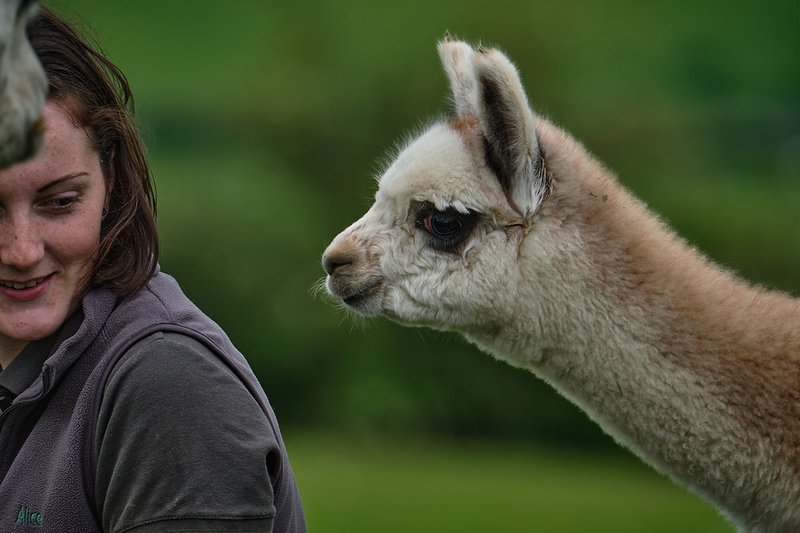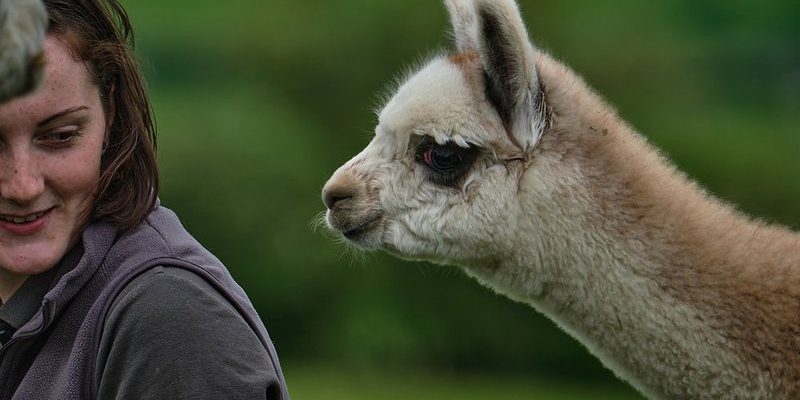
Breeding alpacas isn’t just about producing offspring; it’s about understanding the entire process, from gestation to birth and finally to raising those precious crias. If you’re thinking about diving into the world of alpaca breeding, grab a cup of coffee, and let’s chat about what you need to know—because there’s quite a bit to unpack here!
Understanding Alpaca Reproduction
Before we get into the nitty-gritty of gestation and birth, it’s essential to understand how alpaca reproduction works. Female alpacas, known as *hembras*, are induced ovulators, which means they need to mate to trigger ovulation. This unique process can be a bit different than what you might see in other livestock.
Alpacas typically breed in the early morning or late afternoon, when temperatures are cooler. The mating itself is a fascinating sight, as the male, or *macho*, will often “llama” during the process. This vocalization isn’t just for show; it’s part of their mating behavior.
For a successful breeding, the health of both the male and female is crucial. Hembras should be in good health and have suitable body condition scores to support a pregnancy. If all goes well, you can expect a gestation period of about 11 to 12 months.
Gestation Period: What to Expect
Once your alpaca is pregnant, understanding the gestation period becomes vital. As mentioned earlier, the gestation lasts roughly 11 months, but it can vary. It’s like waiting for a really special package to arrive—you know it’s coming, but you can’t be entirely sure when.
During this time, keeping a close eye on the hembras’ health is essential. Regular veterinary check-ups will help monitor the pregnancy and address any health concerns. Nutrition plays a significant role as well; a balanced diet tailored for pregnant alpacas will support both the mother and the growing cria.
You might also notice some behavioral changes. Pregnant hembras may become a bit more reserved and prefer to rest more than usual. Don’t be alarmed—this is their body’s way of preparing for the upcoming birth.
The Birth Process: What Happens?
When it’s finally time for the birth, also known as *cria dropping*, it can be an exciting and nerve-wracking experience. Most alpacas tend to birth in the early morning hours or late at night. They’re private animals and often prefer a calm, safe environment.
The first sign that labor is starting might be an increase in the mother’s restlessness. She might pace or look for a quiet place to settle in. The actual delivery takes about 30 to 60 minutes. You can expect the cria to arrive feet first, usually with a swift movement. It’s often said that watching an alpaca give birth is a beautiful, miraculous process.
Once the cria is born, it’s important to allow the mother and baby some time to bond. The cria will stand and walk within an hour, which is amazing to witness. This quick development is part of what makes alpacas so unique.
Caring for Newborn Crias
Now that the cria has arrived, the next step is proper care. The first few days are critical. The mother will lick the cria dry, which helps stimulate circulation and bonding. It’s essential to ensure the cria nurses from the mother within the first few hours after birth, as they need that vital first milk, known as colostrum, for essential nutrients and antibodies.
Monitor the cria closely during the first week. They’re usually up and about quickly, and their playful nature often shines through. However, keep an eye on their feeding habits and overall health. If you notice any signs of distress or if the cria isn’t nursing properly, don’t hesitate to reach out to a veterinarian.
You might also consider keeping a close watch for any siblings or potential playmates, as alpacas are social animals. While raising a single cria can work, having companions can significantly benefit their development and social skills.
Feeding and Nutrition for Crias
Feeding a cria is crucial for its growth. In the first few weeks, the primary source of nutrition will be the mother’s milk. As they grow, you can start introducing solid foods. Think of it like weaning a toddler off milk and onto solid food—it’s a gradual process.
Introducing high-quality hay, specially formulated alpaca pellets, and fresh water will help ensure your cria gets the nutrients they need. It’s a good idea to consult with a vet or a nutritionist familiar with alpacas to create a diet plan tailored to your cria’s needs.
Here’s a quick starter list for cria nutrition:
- High-quality hay (timothy or alfalfa)
- Alpaca-specific pellets
- Fresh, clean water
All of this will help set the stage for a happy, healthy alpaca future.
Health Checks and Veterinary Care
Regular health checks are a cornerstone of raising healthy crias. Just like with any animal, keeping an eye on their overall health and behavior can help catch any potential issues early.
Schedule visits with your vet for routine vaccinations and deworming. It’s also essential to establish a vaccination schedule based on local recommendations. As your cria grows and develops, keep a close watch for any signs of illness, such as lethargy, loss of appetite, or unusual behavior. Early intervention can be critical.
Another aspect to consider is socialization. Crias should have opportunities to interact with other alpacas. This interaction not only fosters their social skills but helps build a healthy herd dynamic as they grow.
Breeding alpacas may seem like a daunting task, but with patience and knowledge, the journey can be incredibly fulfilling. From the moment of conception to caring for a thriving cria, every step offers a unique experience filled with joy and learning.
By understanding the ins and outs of gestation, birth, and cria care, you’re well on your way to creating a nurturing environment for these beautiful animals. So, grab your notepad, get ready to embrace the adventure, and enjoy every moment spent with your alpacas!

